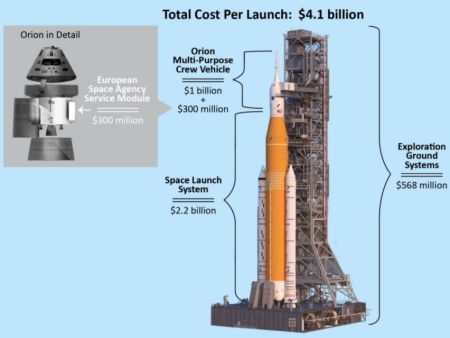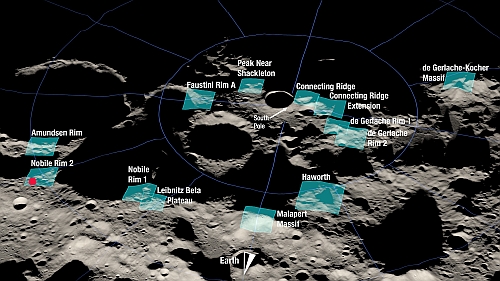Orion fires engine, leaves lunar orbit
After firing its engines yesterday, NASA’s Orion spacecraft has left lunar orbit and begun a long looping route that will zip past the Moon and then head back to Earth.
The burn changed Orion’s velocity by about 454 feet per second and was performed using the Orion main engine on the European Service Module. The engine is an orbital maneuvering system engine modified for use on Orion and built by Aerojet Rocketdyne. The engine has the ability to provide 6,000 pounds of thrust. The proven engine flying on Artemis I flew on 19 space shuttle flights, beginning with STS-41G in October 1984 and ending with STS-112 in October 2002.
The burn is one of two maneuvers required ahead of Orion’s splashdown in the Pacific Ocean on Dec. 11. The second will occur on Monday, Dec. 5, when the spacecraft will fly 79.2 miles above the lunar surface and perform the return powered flyby burn, which will commit Orion on its course toward Earth.
The spacecraft will splashdown on December 11, 2022, if all goes right.
After firing its engines yesterday, NASA’s Orion spacecraft has left lunar orbit and begun a long looping route that will zip past the Moon and then head back to Earth.
The burn changed Orion’s velocity by about 454 feet per second and was performed using the Orion main engine on the European Service Module. The engine is an orbital maneuvering system engine modified for use on Orion and built by Aerojet Rocketdyne. The engine has the ability to provide 6,000 pounds of thrust. The proven engine flying on Artemis I flew on 19 space shuttle flights, beginning with STS-41G in October 1984 and ending with STS-112 in October 2002.
The burn is one of two maneuvers required ahead of Orion’s splashdown in the Pacific Ocean on Dec. 11. The second will occur on Monday, Dec. 5, when the spacecraft will fly 79.2 miles above the lunar surface and perform the return powered flyby burn, which will commit Orion on its course toward Earth.
The spacecraft will splashdown on December 11, 2022, if all goes right.


